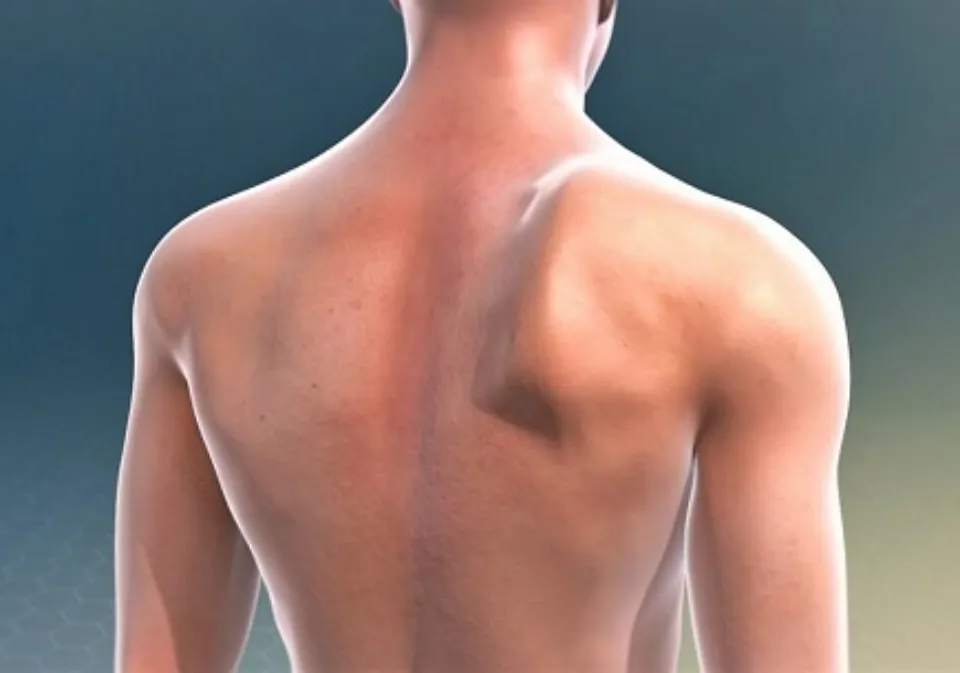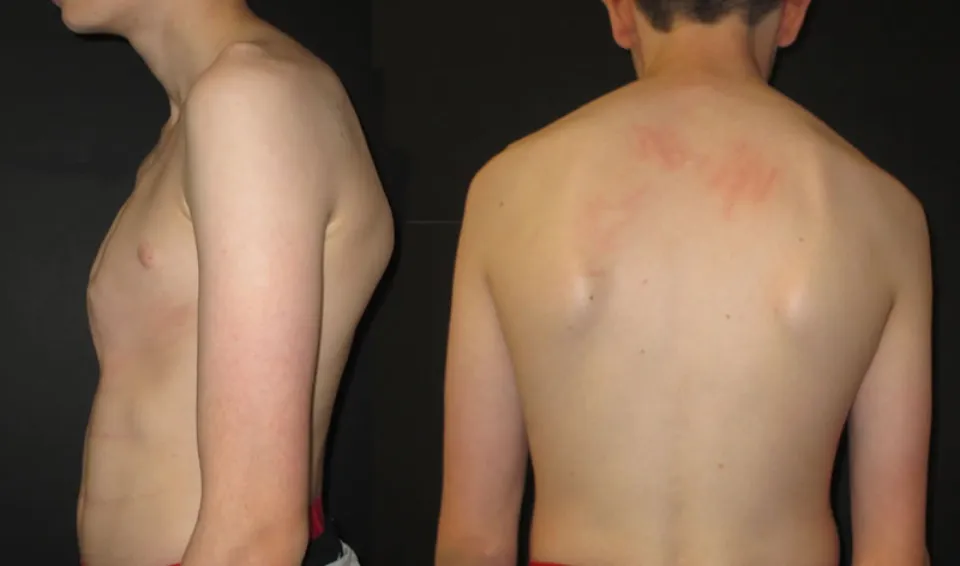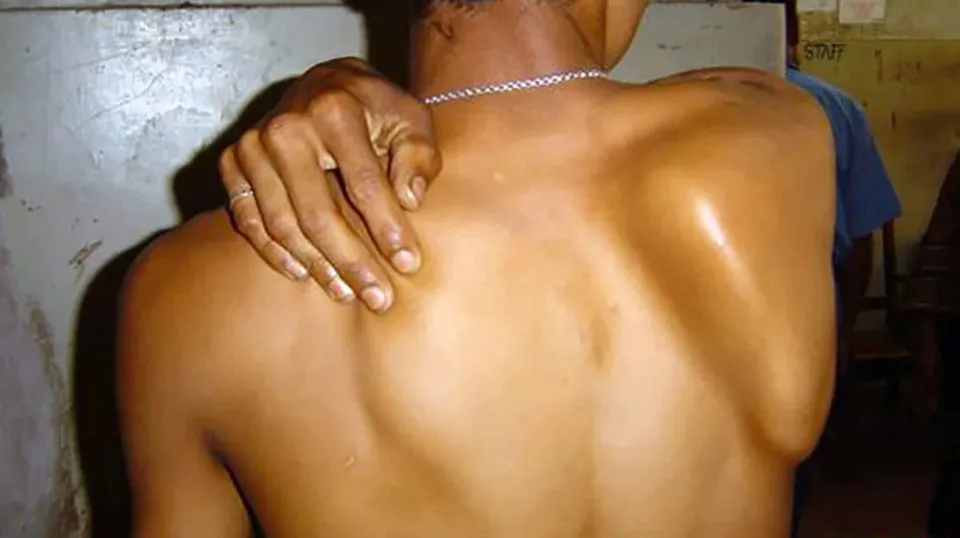
Why Do My Shoulder Blades Sticking Out – Causes & How to Fix
Scapular dyskinesis, a condition that affects the shoulder, can occur when your shoulder blades are unstable. Losing your shoulder blades’ normal range of motion is how it is described.
Your shoulder blades will protrude abnormally during rest or activity, which makes scapular dyskinesis easy to spot.
Scapular winging could have several causes, which will be covered in this article along with symptoms and cures.
Causes of Shoulder Blades Sticking Out

Nerve damage is frequently a factor in scapular winging. It may affect one of three major nerves in the shoulder:
- The dorsal scapular nerve, which controls the rhomboid muscles
- The spinal accessory nerve, which controls the trapezius muscle
- The long thoracic nerve, which controls the serratus anterior muscle
Injuries to these nerves or surrounding muscles can result from:
- Overuse of the shoulder, back, or neck
- Allergic reactions
- Illnesses, such as influenza
- Use of some medications, such as those for muscle dystrophy
- Surgery near the shoulders or ribs, such as a mastectomy or rib resection
- Blunt force trauma to the nerves of the shoulder, neck, or back
How Can Capital Physiotherapy Help Reduce Scapula Winging?
Our physiotherapists may employ a range of different treatments to try and relieve symptoms brought on by scapula winging and reduce the winging itself after a thorough assessment to identify the muscles contributing to the winging scapula.
Treatment options include:
- Postural education and correction
- Postural taping
- Massage to relieve tension of tight muscles
- Dry needling to relieve muscle pain and tightness
- Muscle strengthening and re-training to correct muscle-imbalances causing the winging
- EMG activation prior to strengthening to help activate muscles that have difficulty firing due to altered neuromuscular activation patterns
Just keep in mind that these exercises are of a general nature and do not take your injuries or medical history into account. For you to completely recover from your shoulder blade discomfort and experience pain-free functioning at work, you will still need to progress to more difficult and functional strengthening exercises.
How to Treat Shoulder Blades Sticking Out?
Scapular winging has various causes, each of which requires a different approach. Options range from surgical to nonsurgical.
Depending on the kind of nerve damage, different nonsurgical options may be more or less suitable.
The amount of treatment needed for recovery may be minimal or nonexistent if the long thoracic nerve has been damaged. Physical therapy and a support item like a sling may be advised by the physician.
The doctor will likely advise physical therapy in the event that the dorsal scapular nerve is injured. Additionally, they might suggest painkillers, muscle relaxants, and anti-inflammatory drugs.
Surgery is more likely to be necessary in cases of traumatic injuries and spinal accessory nerve damage.
In order to repair the damage, a doctor may advise a nerve and muscle transfer, in which a surgeon transplants healthy muscles and nerves from another part of the body.
Alternately, they might advise scapulothoracic fusion, which involves joining the shoulder blades to the ribs’ backs. A nerve and muscle transfer carries fewer risks than this procedure.
When Should You Be Concerned About Scapular Winging?
You should be concerned about scapular winging if you have:
- Decreased upper extremity strength on one side versus the other
- Pain around the shoulder or shoulder blade
- Numbness and tingling around the shoulder blade or that travels from the neck down to the arm, hand, and fingers
How to Identifying Scapula Winging

Whether at rest or while moving, the scapula can develop a bony protrusion called scapula winging.
Despite the fact that it may initially appear alarming, rest assured that it is typically the result of a serratus anterior muscle that is too weak to secure the shoulder blade.
How is a Winged Scapula Diagnosed?
Your Resurgens shoulder specialist will first talk to you about your medical background, way of life, and how the condition first manifested itself in order to correctly identify a winged scapula. They will then conduct a physical examination to determine your range of motion and pain threshold. Only minor discomfort is felt during the quick exam.
In order to rule out any additional potential shoulder conditions, your doctor will then order diagnostic imaging tests like x-rays or MRI scans. To evaluate your neuromuscular condition, they might also perform an ultrasound or electrodiagnostic testing. After that, they will discuss your available treatment options with you and design a special treatment strategy for you.
Summary
Well, let me start by saying how much I appreciate your reading this far. That you learned something from this post means a lot. Scapular winging is not necessarily a bad thing, to sum it up. Your shoulder stability won’t be ruined by it because it happens. The best ways to get better at it are to internal rotate your shoulders and better position your ribcage against gravity. I’m sure you’ll notice improvements if you put your full attention into the breathing and repositioning exercises before moving on to the strength training. Take advantage of this routine by doing it two or three times per week.
FAQs
Why Do My Shoulder Blades Stick Out Naturally?
It’s uncommon to have scapular winging. It usually results from nerve damage around the shoulders and involves one or both shoulder blades protruding from the back. Different treatments and exercises can help to reduce symptoms and encourage recovery.
What Causes Shoulder Blade to Pop Out?
To pull the bones out of place, a powerful force is required, like a swift blow to the shoulder. Extreme shoulder twisting can cause the upper arm bone’s ball to pop out of the shoulder socket. An incomplete dislocation occurs when the upper arm bone is partially in and partially out of the shoulder socket.
Is It Okay If My Shoulder Blades Stick Out?
You might not give the scapulae (plural for scapula; a scapula is the same as a shoulder blade) sticking out much thought if they are thin and all arms and legs. However, scapular winging in adults is abnormal and can have negative effects, especially when it only affects one side.





Average Rating